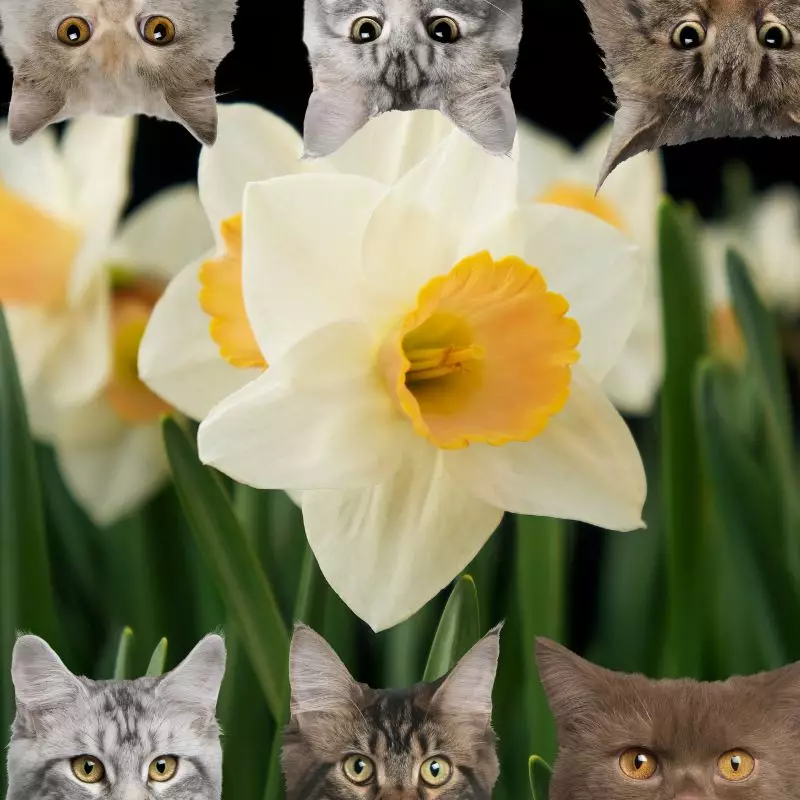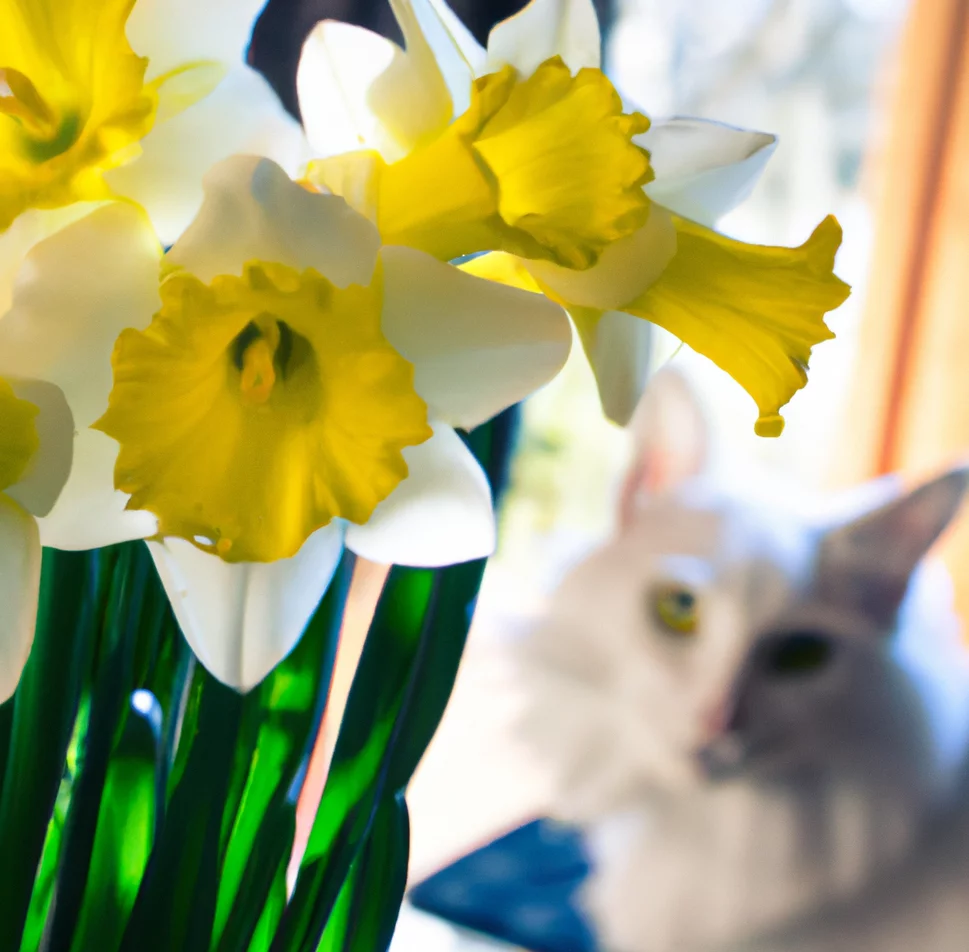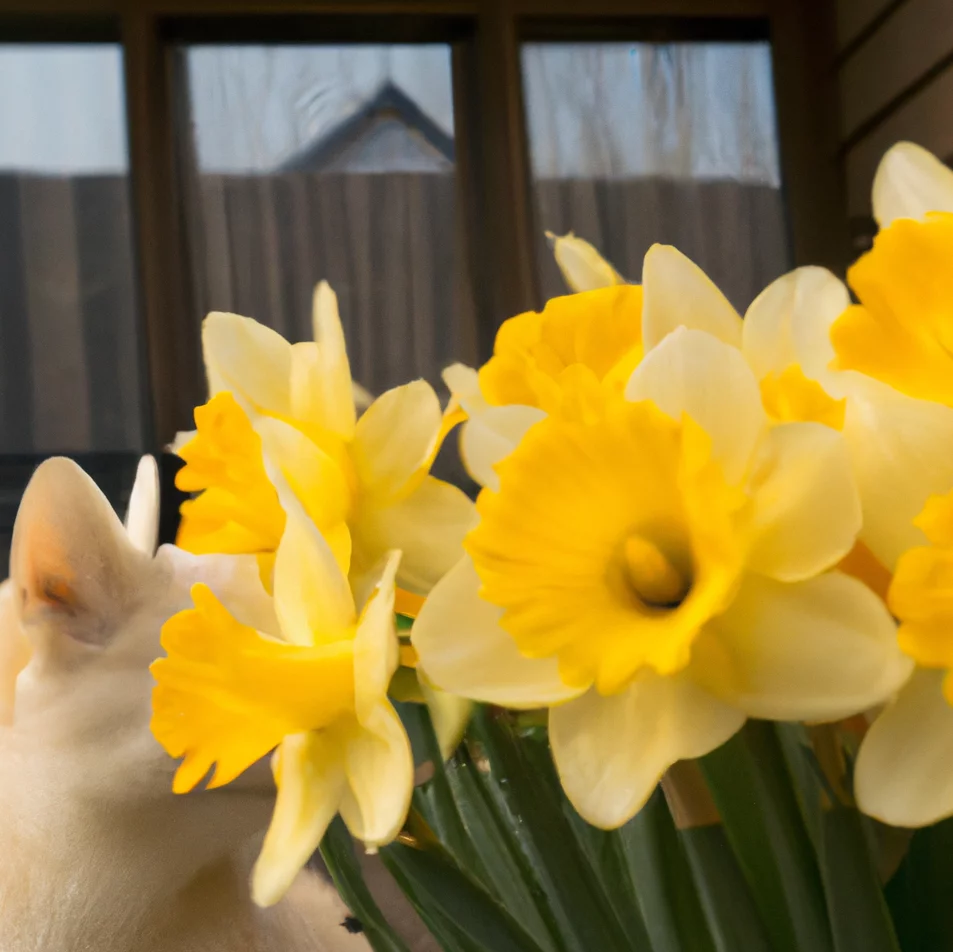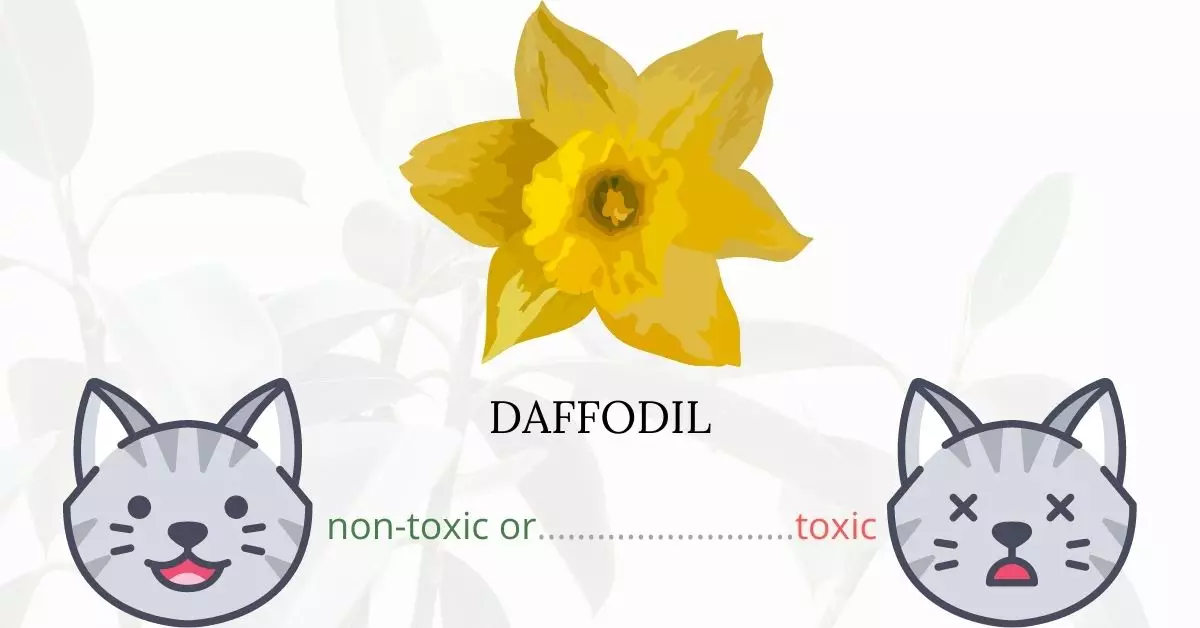Yes, daffodils, also known by their other common names such as Narcissus, Jonquil, and Paper White, are toxic to cats. These beautiful blooms contain lycorine and other alkaloids, predominantly in their bulbs, which can be harmful if ingested by felines. Common symptoms following ingestion include vomiting, due to lycorine’s emetic properties, as well as hypersalivation, abdominal pain, and diarrhea, among other signs of poisoning.
This article was written in collaboration with a team of experienced DVMs (doctors of veterinary medicine). Their expertise ensures that we provide accurate and up-to-date information on the potential risks associated with various plants, specifically daffodils in this context, and their effects on cats. Additionally, we have thoroughly researched high-authority websites such as ASPCA and PetMD to further validate and corroborate our information on every plant discussed.
Clinical Signs of Daffodil or Narcissus Poisoning in Cats

Daffodils contain various toxins, most notably lycorine, which can pose severe risks to cats upon ingestion, inhalation, or even mere contact. Recognizing the clinical signs early can aid in prompt treatment. Here are the clinical signs explained in detail:
- Drooling (Hypersalivation): This is often one of the first symptoms, caused by the immediate irritative effects of the plant’s toxins on the cat’s oral mucous membranes.
- Nausea: A cat may demonstrate behaviors such as drooling, lip licking, and swallowing frequently. The presence of harmful alkaloids in the daffodil can upset the stomach.
- Vomiting: Lycorine, an emetic substance in daffodils, triggers the vomiting reflex. It’s the body’s way of trying to eliminate ingested toxins.
- Diarrhea: The gastrointestinal system reacts to the toxins by increasing its activity, leading to diarrhea. This can further lead to dehydration if not addressed.
- Lethargy: As the toxins circulate in the cat’s system, they can affect the central nervous system, causing a noticeable decrease in energy and responsiveness.
- Increased Heart Rate (Tachycardia): The cardiovascular system can be affected by the toxins, leading to an elevated heart rate as the body tries to circulate and process out the offending substances.
- Abdominal Pain: Ingestion of daffodils can irritate the lining of the stomach and intestines, leading to cramping and discomfort.
- Abnormal Breathing: Respiratory distress or altered breathing patterns can occur as the toxins can affect respiratory muscles and oxygen exchange.
- Cardiac Arrhythmias: The toxins in daffodils can interfere with the normal electrical activity of the heart, leading to irregular heartbeats or rhythms.
If you suspect your cat has come into contact with, smelled, or ingested a daffodil, it’s essential to seek veterinary attention immediately.
First Aid and Treatment of Daffodil or Narcissus Poisoning in Cats

Your veterinarian’s treatment for your cat will be determined by its symptoms. Your vet will flush any remaining plant parts from your cat’s mouth by gently cleaning them out with water. Your veterinarian will not have to force your cat to vomit as one of the toxins’ emetic characteristics will cause your cat to vomit on his own.
Your veterinarian will keep an eye on your cat for signs of dehydration and electrolyte imbalance. Low blood pressure, liver damage, and seizures will all be on his radar. He may also administer medications to alleviate other symptoms that your cat is experiencing.
Recovery from Daffodil or Narcissus Poisoning in Cats

With prompt veterinary treatment, your cat should make a full recovery. Recovery can take anywhere from 24 hours to a week, depending on how badly it was poisoned and how much of the material it ate.
Prevention of Daffodil or Narcissus Poisoning in Cats
Remove all daffodils from your home and yard to prevent future incidents of poisoning. Make sure that all plant material is properly disposed of so that your cat cannot get dried branches, leaves, blooms, or bulbs.
Limit your cat’s outdoor activities to prevent exposure to toxic plants in your neighborhood. Plant cat-safe grasses and plants that your cat can graze on as this will also make them less likely to sample dangerous plants.
If you love plants but have cats at home, check out these lists:





